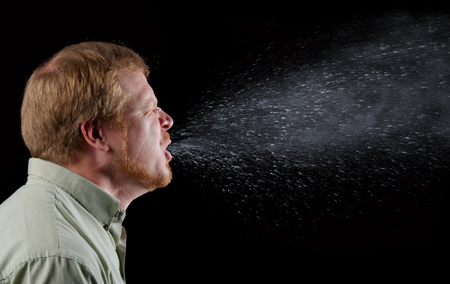 |
|
This photograph captures a sneeze in progress, revealing the plume of salivary droplets as they are expelled in a large cone-shaped array from this man's open mouth, thereby, dramatically illustrating the reason one needs to cover his/her mouth when coughing, or sneezing, in order to protect others from germ exposure. [CFP]
|
On April 26, 2009 the United States declared a public health emergency due to a potential swine flu pandemic caused by a new strain of virus which can be treated only with Tamiflu and Relenza.
There is no vaccine against swine flu, but the CDCs (Center for Disease Control) around the world are working to produce one. More cases surfaced from Canada to New Zealand, and Mexico, the outbreak's epicenter, raised the number of deaths to 149, and the number of cases to more than 1,995.
Here are several steps to prevent the spread of the swine flu virus:
If you have flu symptoms, stay home from work or school to avoid spreading the disease. Do not return until two days after your symptoms are gone.
Cover your nose and mouth when you cough or sneeze, and wash your hands frequently.
Go to the hospital if you have severe symptoms such as difficulty breathing. If your symptoms are mild, stay home to avoid spreading the virus to others at the hospital.
Masks may be recommended for health care workers, family members and others who come in close contact with swine flu patients, but there is no need for the general public to wear masks.
It is safe to eat properly handled pork. Cook it to an internal temperature of at least 160 degrees.

